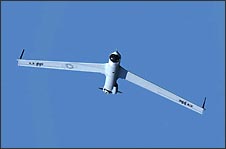
FAA granted permission to the Nevada UAS test site team to fly a ScanEagle UAS at or below 3,000 feet, monitored by a visual observer and mission commander.
The Federal Aviation Administration announced on June 9, 2014, that the state of Nevada's unmanned aircraft system (UAS) test site is ready to conduct research vital to integrating UASs into the nation's airspace.
Nevada has been on the leading edge of aerospace flight testing for almost 70 years, said Transportation Secretary Anthony Foxx. Today, the state continues that tradition by contributing to the safe and efficient integration of unmanned aircraft into the U.S. aviation system.
FAA granted the Nevada team a two-year Certificate of Waiver or Authorization (COA) to use an Insitu ScanEagle UAS at the Desert Rock Airport in Mercury, Nev. Desert Rock Airport, owned and operated by the Department of Energy, is a private airport and not for general use. The ScanEagle will fly at or below 3,000 feet, monitored by a visual observer and mission commander. Initial flights will verify that a UAS can operate safely at the airport.
Nevada's research will concentrate on UAS standards and operations as well as operator standards and certification requirements. The site's activities also will include a concentrated look at how air traffic control procedures will evolve with the introduction of UAS into the civil environment and how these aircraft will integrate with NextGen, the modernization of the national airspace system.
Image courtesy of Insitu.

